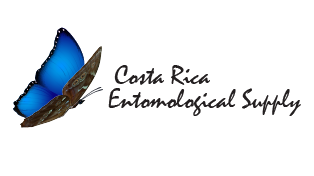SAN BOSCO, Costa Rica — Down a half-mile of rocky dirt road, past banana groves and cattle swishing their tails through the warm, moist air, Miguel Murillo is pursuing a different breed of agriculture.
Every morning, he walks to his six backyard gardens, each flush with eye-popping tropical greenery, and gingerly removes tiny spheres from the leaves.
They are eggs, and his “crop” is butterflies.
This is a mariposario, a butterfly farm, one of dozens across the Costa Rican countryside. Their journey begins not only here in the lush green lowlands of Central America, but also farther afield in Africa and Asia.
For the farmers, the butterflies are the means to a demanding yet family-friendly way of life that is good for the environment and good for the wallet, providing a leg up out of poverty. In the wild, the life of a butterfly is a risky proposition.
After mating with the male — sometimes for hours at a time — an adult female typically lays about 100 eggs.
Perhaps two will make it to adulthood. The rest are eaten by lizards, spiders and wasps.
Or, the eggs may never be laid in the first place, because there isn’t enough of the right kind of leafy habitat.
In Murillo’s gardens, hung with protective black nets, the odds are reversed.
Every morning, the tanned, burly farmer and his three sons collect eggs and put them in small containers. They check the boxes for any eggs from previous days that have hatched into caterpillars, and place those in cages with a supply of leaves — food for the voracious but finicky eaters. Each species prefers a different kind of plant.
After a month or so, each develops into a motionless, hard-shelled pupa, also known as a chrysalis. These are collected, carefully placed in a blue plastic box, and driven to the bus station in nearby Guapiles in the family’s Suzuki Sidekick — which, like the concrete house, was paid for by butterflies.
Butterflies are raised in the United States as well. But museums like specimens from abroad, where unfamiliar host plants yield unfamiliar species of the winged insect.
The idea to export butterflies from Costa Rica began one day in 1983, when Joris Brinckerhoff, a New Hampshire native and Peace Corps volunteer hitchhiking in the Central American nation, was picked up by a butterfly enthusiast who had heard that people in southeast Asia had begun exporting the insects for exhibit. Brinckerhoff decided to give it a try in Costa Rica.
At the time, the economy was in a funk, partly due to the country’s reliance on exporting bananas and coffee — nonnative crops for which prices were in global decline. Brinckerhoff, who had majored in economics and political science, thought butterflies would be a more sustainable export.
The market grew slowly and he added employees. Eventually, he and his wife started the Butterfly Farm.
As museums started to buy the insects, employees, friends and relatives asked how they could start out on their own. Today, Brinckerhoff exports pupae — at $1 or $2 apiece on behalf of 100 local farmers, Murillo among them, under the label of Costa Rica Entomological Supply.
